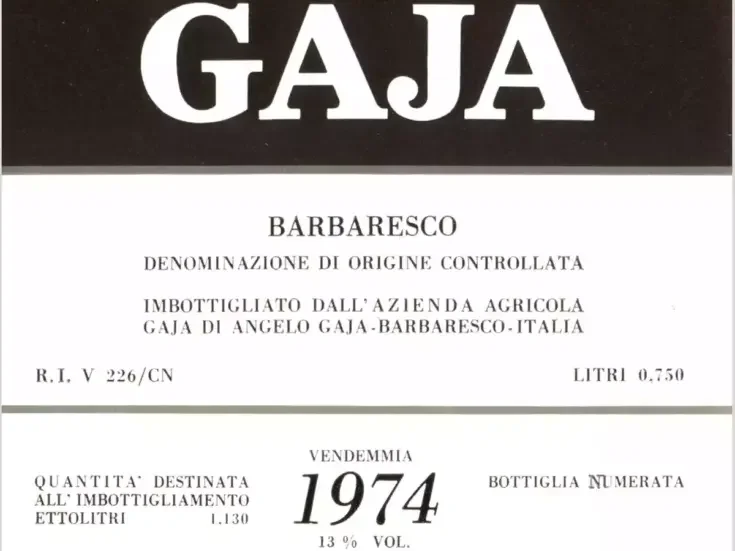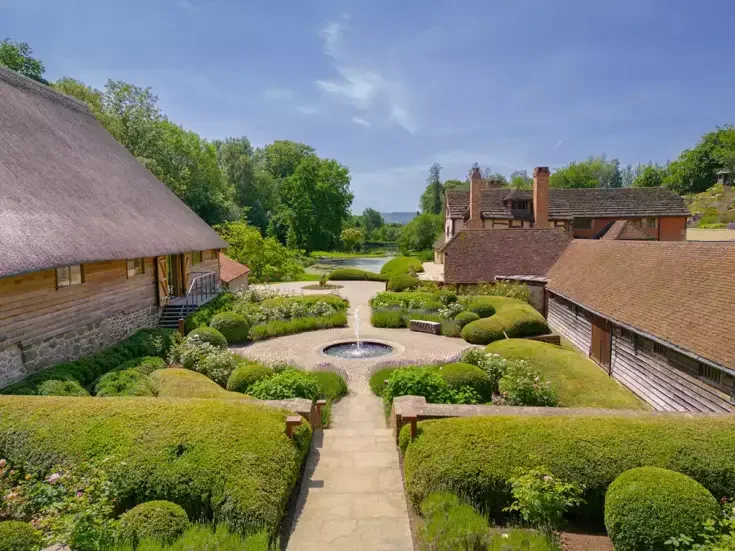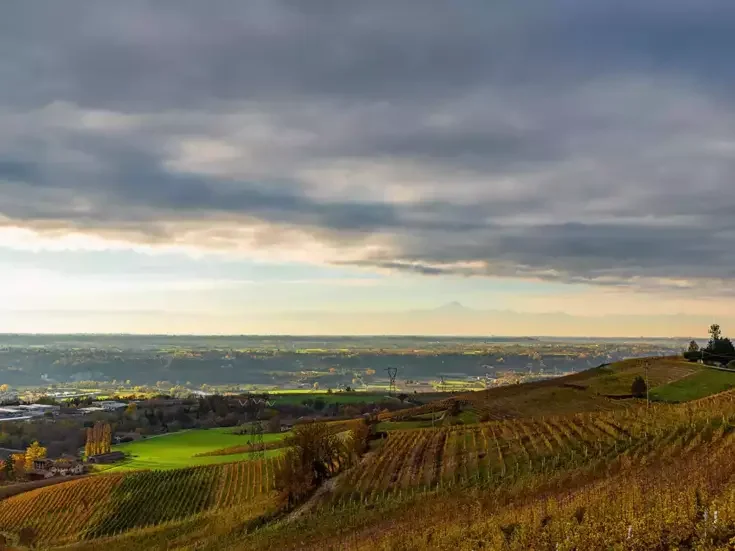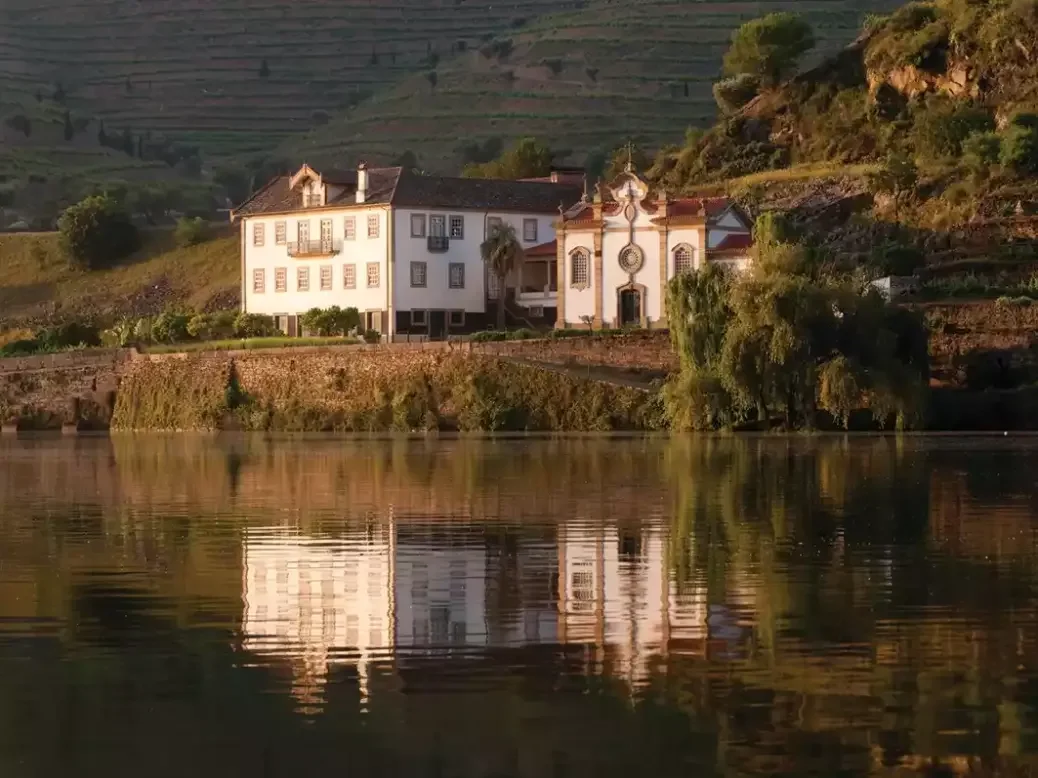
Richard Mayson celebrates 200 years of Quinta do Vesúvio, an estate responsible for some of the greatest Single-Quinta Vintage Ports as well as increasingly fine table wines.
The year 1792 was literally a breakthrough for the Douro Valley. After 12 years of blasting and shifting huge lumps of granite, the River Douro became navigable for the first time, as far as Spain. The white-water rapids at Valeira had long been a physical barrier within Portugal, with the land upstream being isolated from the rest of the country. Indeed, inhabitants of the region (known as Trás-os-Montes, “Behind the Mountains”) were inclined toward Salamanca in Spain rather than Oporto, such was their remoteness. A tax of 400 reis per pipe of wine, aguardente, vinegar, or “any liquid” transported by river was used to finance the removal of the rapids. It effectively opened up a huge stretch of virgin country to vineyards and wine.
Among the first to take advantage were the entrepreneurial Ferreira family, whose eponymous Port-shipping firm was founded in 1751. The first recorded vineyard in the Douro Superior appears to have been Quinta do Silho at Barca d’Alva on the frontier with Spain, planted by Miguel António Ferreira in 1820. This was closely followed by a property called Quinta das Figueiras (the “Fig Tree Quinta”), which had been acquired by the so-called capitalista da Régua (“capitalist from Régua”), António Bernardo Ferreira. The property grew figs, corn, almonds, olives, and citrus fruit, but he planted the first vines in 1823 and embarked on an ambitious building program. He renamed the property Quinta do Vesúvio. Five years later, he was already able to write proudly of his new estate, “All the English have praised my warehouse […] adding that they had not seen another winery in the Douro like mine, which has reinforced their belief in my passion for good wines, so much so that they openly ay that nobody in Oporto or the Douro has better wines.” There were eight stone lagares, each with a capacity of 25 pipes, equipped with their own pissoirs, should anyone be caught short while treading grapes!
Vesúvio and other new estates in the Douro Superior fell outside the 1761 demarcation, and the wines were technically illegal, though highly regarded for their quality. By the early 1830s, the Viscount of Vilarinho de São Romão wrote that “almost all the wines from Arnozelo upstream to Vilarinho de Castanheira [that is, above the Valeira rapids], as well as those from the other side of the river, are being brought each year into the Feitoria Demarcation. This wine is really very good.” This is the area that today we call the Douro Superior, the largest of the three subregions now integrated into today’s Port and Douro DOC. António Bernardo was clearly enthralled with his purchase, building an impressive house at Vesúvio, still the largest in the Douro, which was finished in 1835, the year he died.
The Ferreirinha force
The property passed to his son (also António Bernardo), who had recently married his cousin, the diminutive Dona Antónia Adelaide Ferreira. Known locally by the affectionate, diminutive name Ferreirinha, she became a force to be reckoned with in the predominantly male world of Port wine. Born at Régua in 1811, over the course of her long life she became the largest landowner in the Douro, with a total of 24 quintas, including Vesúvio. All her properties are distinguished with elaborate stone-and-wrought-iron gateways, just like the one at Vesúvio that still stands today. Charles Sellers, writing in 1899, three years after her death, portrays Dona Antónia as “the richest of landed proprietors, but there are few ladies in the land who had seen so little or knew so little of the world. Her thousands of acres of mountain land covered with vines were her chief thought.”
She was sufficiently wealthy to be able to furlough her staff during phylloxera in the 1870s. Dona Antónia married twice—first to António Bernardo and, following his death, to her estate manager Francisco José da Silva Torres. Sellers goes on to record that “there were never two men who spent more money in the Douro than the two husbands of Dona Antónia. During her reign (for that seems the right word), Dona Antónia entertained lavishly at Vesúvio. It was after one such sojourn in 1861 that she survived an accident on the river (at Cachão de Valeira) in which her friend and companion Joseph James Forrester was drowned. By 1887, Vesúvio had its own railway station. When Dona Antónia died in 1896, her properties were producing more than 1,500 pipes of Port a year, and she left her company, AA Ferreira, with a stock of 13,000 pipes. At the time, it is estimated that Vesúvio had 140ha (350 acres) of vineyard.
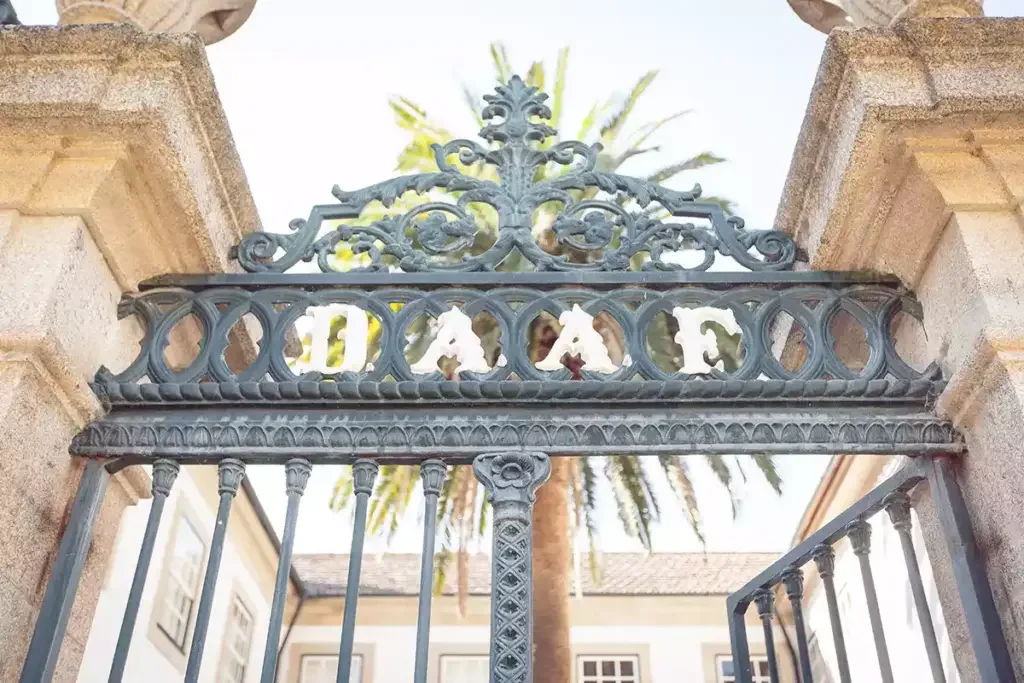
The modern renaissance
Quinta do Vesúvio continued in the ownership of the Ferreira family until the 1980s, by which time—
due to Portugal’s Napoleonic code of inheritance—there were so many individual shareholders that the property had become unmanageable. As a result of the damming of the river in the early 1970s, much of the best vineyard had been submerged, and little investment had been made either in planting new vines or in restoring the buildings, some of which were close to collapse. The area of vineyard had fallen to just 60ha (150 acres).
In 1989, the Symington family (already owners, at the time, of Dow’s, Graham’s, and Warre’s) came to the rescue—it was a “now-or-never purchase,” according to Johnny Symington, who heads the family firm today. The family already owned a property, Senhora da Ribeira, on the opposite, north side of the river, which supplied Dow’s, but decided to keep Quinta do Vesúvio separate from their other Port houses. Since 1989, Vesúvio has produced a Vintage Port nearly every year, 1993 and 2002 being exceptions, along with 2020 and 2021, when foot-treading was prohibited by Covid. Much has been done to revive the property in the interim, with about €3 million spent on the vineyard alone. Predominantly north-facing, the Vesúvio estate covers a total area of 326ha (800 acres), about half of which is now under vine. The vineyard rises from 360ft (110m) above sea level on the riverbank, to nearly 1,500ft (450m) at the top of the estate, affording a number of mesoclimates for different styles of wine according to the year. The enormous lagares are still in use, having been thoroughly revamped and equipped with temperature control, essential in this part of the Douro. The old azenha (mill) has been converted into an air-conditioned lodge for aging wines in cask. Selection is paramount, and the Symington family have come to know and understand the different vineyard plots that—like Lisbon, Rome, and San Francisco—spread over seven hills.
Knowledge and investment show in the improved quality, with unfortified Douro wines having been produced at Vesúvio since 2007. Capela da Quinta do Vesúvio, a super-premuim Vintage Port from the oldest vines, has been produced in five vintages so far: 2001, 2007, 2011, 2016, and 2017. I found that early Vesúvio Port Vintages sometimes showed a roasted character, reflecting the arid heat of the Douro Superior, where annual rainfall is frequently less than 16in (400mm) (viz the 1995 Vintage Port shown at the bicentennial tasting). More recent Ports have shown greater purity and definition, even in hot, dry vintages like 2017 and 2003 (see below). Vesúvio at its best is up there with the great, classic Vintage Ports—unlike most properties in the Douro, it is sufficiently large and diverse for wines from different parts of the estate to complement each other in a single-estate blend. With recent hot vintages and concern over climate change, altitude is now everything when it comes to making the best Douro reds—something that Dona Antónia cannot have imagined when she added these plots to the estate a century and a half ago.
In October 2023, father and son Johnny and Tom Symington, presented a selection of Quinta do Vesúvio’s wines (both Port and Douro DOC) at the St James’s Hotel in London to celebrate the property’s bicentennial. I have added one or two of my more recent Vesúvio Port notes (along with the date of the tasting) to the lineup, to share more of the flavor and character of this remarkable Douro Superior estate.
Tasting Quinta do Vesúvio
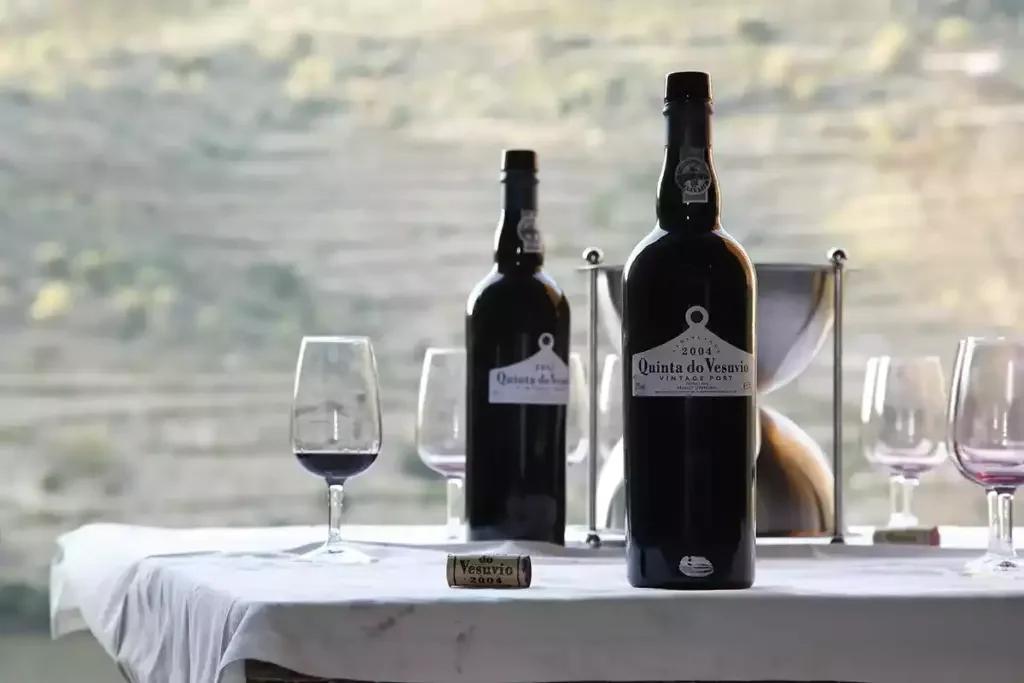
Comboio de Vesúvio 2020 Douro DOC
The train (comboio) has been a lifeline for Vesúvio for nearly 150 years, recognized on the label of what is effectively the third wine from the property, first produced in 2018. This is a roughly equal blend of Touriga Nacional, Touriga Franca, and Tinta Roriz, bottled without recourse to aging in oak, hence it’s fresh, up-front aromatic floral—hedgerow aromas and firm, quite tight-knit, sappy-herbal, berry-fruit flavors. Enjoy this as intended in its first bloom of youth. | 88
Pombal do Vesúvio 2020 Douro DOC
The second wine of Vesúvio, named for the dovecote, which is something of a landmark on the quinta. This is mostly Touriga Franca, from two separate vineyard plots, along with Touriga Nacional (30%) and Tinta Amarela (5%), aged for ten months in seasoned 400-liter and 225-liter French oak: very deep opaque color, with lovely, perfumed rock-rose and violet aromas, showing underlying depth. Little or no oak evident on the nose; it is the fruit that takes the lead. Ripe, supple berry fruit on the palate, backed by fine-grained tannins, with a finish that is firm but not astringent; nothing aggressive here and already very approachable. It will develop well in bottle over the next decade. | 94
Quinta do Vesúvio 2020 Douro DOC
Mostly Touriga Nacional (75%), from a west-facing vineyard at 1,500ft (457m) in altitude, with Touriga Franca (22%) and Tinta Amarela in a supporting role. The wine was aged (80%) in new French oak with a capacity of 225 and 400 liters. Still quite demure on the nose, needing time to open up; heady, scented, yet restrained (especially for Nacional); lovely, ripe, almost-exotic fruit, with firm, bold tannins, hefty but not massive in structure, and supple on the finish, with a lovely expression of fresh Douro fruit. Give this another five years in bottle before broaching. | 96
Quinta do Vesúvio 2015 Douro DOC
Plentiful rainfall at the start of the year helped to sustain the vineyard during the dry summer that followed. This is a blend of 54% Touriga Nacional from a high-altitude vineyard, 42% Touriga Franca, and 4% Tinta Amarela, aged for 16 months in (75%) new French oak. Still no hint of age, with a lovely, still demure but ripe berry-fruit and black-cherry character on the nose, glorious richness on the palate, with ripe plum and cherry backed by firm gravelly tannins, and an elegant, raspberryish finish. Beautiful balance overall. Long and linear. Drink now and over the next 15 years. | 95
Quinta do Vesúvio 2012 Douro DOC
This was an unusually dry but relatively cool year in the Douro Superior. The wine a blend of 70% Touriga Nacional, 25% Touriga Franca, and 5% Tinta Amarela; 15 months in new and second-year French oak. Still deep and youthful in appearance after a decade in bottle; ripe, leathery-cedary fruit aromas, with well-integrated oak; deep, dense, bittersweet, herbal, black-cherry fruit, supported by bold, gravelly tannins. The finish is long and vibrant. Aging well. Drink now and over the next decade or so. | 94
Quinta do Vesúvio 2009 Douro DOC
This is only the third Douro red to be produced from Vesúvio; a blend of 70% Touriga Nacional, 20% Touriga Franca, and 10% Tinta Amarela, with 13 months in new French oak. 2009 was a hot year and it still shows; deep and dark at the center, just showing its age on the rim. Rich and rather pruney on the nose; similarly ripe, heady fruit on the palate, dense with supple tannins, kept alive by a streak of acidity on the finish. It lacks the finesse of more recent vintages. | 90
Quinta do Vesúvio 2019 Vintage Port
From a dry year, fortunately without any extreme heat, a blend of 35% Touriga Nacional, 33% Touriga Franca, 18% Alicante Bouschet, 8% vinha velha (field blend) and 6% Tinta Amarela. Very deep, inky color. Lovely, open, aromatic plummy aromas, opulent and exotic, with a hint of lavender. Soft, rich, and voluptuous initially, with tannins building on the palate, leading on to a big, broad, firm finish retaining characteristic opulence. “Suave” describes the wine overall. Ready to drink relatively early: 2030–50+. | 96
Quinta do Vesúvio 2018 Vintage Port
An outstanding year in the Douro Superior after spring rainfall, a hot August, and harvest in mid-September under perfect conditions. This is a blend of 54% Touriga Nacional, 40% Touriga Franca/Alicante Bouschet (co-fermented), and 6% Sousão. Beautifully lifted, scented floral aromas (rose petals), vinous and overt. Sweet and suave initially; ripe but gentle blackberry fruit, backed by velvety tannins, leading to a finish that is both powerful and elegant at the same time. Great freshness and vitality; magnificent for drinking over the medium to long term. Just 965 cases produced, representing 3% of the quinta’s total production. (Note from a tasting in 2020.) | 98
Capela da Quinta do Vesúvio 2017
A field blend from centenarian vines at Vinha da Capela, together with Touriga Franca, Alicante Bouschet, Sousão, and Touriga Nacional. Lovely, lifted, floral aromas, with wild berry and green tea on the nose. Similarly exotic on the palate, showing great purity of fruit once again, licorice concentration wrapped around bold, spicy tannins. A massive finish, leaving fresh acidity from the Sousão grape. Just 472 cases in total. (Note from a tasting in 2019.) | 97
Quinta do Vesúvio 2003 Vintage Port
A hot year throughout Europe, which produced some exceptional Vintage Ports, some of which are marked by the heat. Still retaining its deep, youthful color, Touriga Franca is to the fore here, with open, ripe aromas redolent of date and prune. Fresher but still opulent in style on the palate, with ripe morello-cherry sweetness, mouth-filling tannins, and good definition. Lovely now, and with 20-plus years of drinking life ahead. (Note from a tasting in 2022.) | 95
Quinta do Vesúvio 1995 Vintage Port
Hot weather in August shaped these wines, which came along in the shadow of the widely declared 1994 vintage. Deep and opaque at the center, starting to brown on the rim. Rich and a bit soupy on the nose, with rather hot, pruney fruit, rich and heady, but lacks freshness and definition, with powerful, licorice-like concentration mid-palate and muscular tannins. Impressive but, to my mind, rather lacking in finesse. Drink now to 2035. | 89

